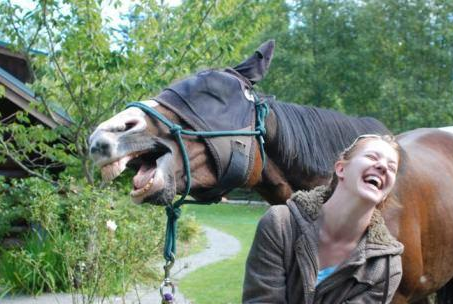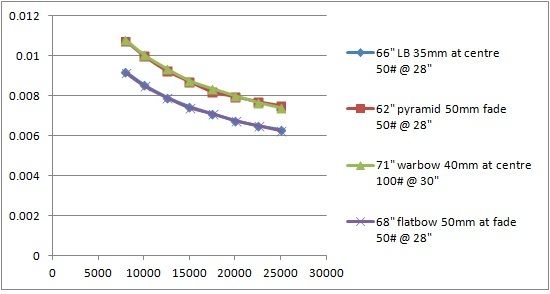This has been knocking around in my head for a while now, and I felt I needed to get it written down before I confuse myself too much. I don't suppose that by the end of it many people will have come around to my way of thinking. That's fine. We're all in this for fun. Perhaps though, some will come to understand wood a little better, and make bows under some new light. Who knows? I'd appreciate any feedback.
We have in the past sought to discover a way to numerically communicate the value of any particular sample of wood, in such a way that it can be compared to the numerical value of another wood and placed in some sort of ascending or descending order.
Going by memory alone, I believe some of the suggestions have been some combination of:
MoE & MoR; and,
MoE, MoR & Density;
In any case there has usually been some mention of the MoE and MoR. This seems to make sense. The MoE is a measure of how stiff the wood is. That is: how resistant is this sample of wood to being bent? The same would seem to be true for MoR, which is a measure of how much pressure the sample can withstand before mechanically failing.
The MoR figure is a little bit of a false target though. When we read MoR numbers we learn the point at which the wood sample fails mechanically in a wood bending test. I've read recently that scientific bodies that test this kind of thing may measure multiple samples, but they also do the bend test all in one go in a machine that costs More than we'd all make in a year put together. The downside of this...actually there are a couple:
A wood sample may behave admirably when bent once or a small number of times, but will fail if bent many times; and,
These bend tests tell us nothing about the set-taking properties of the wood.
So the pressure experienced by a piece of wood in a bow is well below the wood's MoR. A few years ago I did quite a bit of bend testing and I found that of the better samples, a bending stress useful for bows was about 60% of the measured MoR (the MoR that I measured, not the published values).
So, I suppose there would be some merit in quoting the MoR of a wood, especially if that figure was measured in a bend test which subjected the sample to many bends similar to its potential use in a bow.
However not all woods are the same. Some woods will have the same MoE and MoR, but if subjected to the same bending force will take different amounts of set, because their capacity to resist plastic deformation is different between load=zero and load=mass. You might think of it this way: Two sports cars may have the same HP engine, with the same measured top speed. These two cars take off from the start line at their maximum rate of acceleration. At any point in time before they both reach maximum speed, the two cars may have different speeds because of any number of reasons.
Still with me? I hope so.
So what are we to do? Well, as the powers that be are not considerate enough to conduct bend tests in such a way that perfectly suit our needs, we may have to all be conducting our own bend tests. This is I think less of a problem than many think, and for people who like making bows, this can become quite exciting (really, it can
END PART ONE
*edited to add*
This development is not entirely my own invention. I was inspired down this path by Woodbear on the paleoplanet forums, who said he is most interested with a bow wood's working strain, with other statistics coming afterwards.



